- Many IT departments struggle with their finances, namely making decisions about where their money should go, answering questions about where their money has gone, and demonstrating the relationship between IT cost and IT value.
- Too often, these struggles are rooted in fundamental problems with the IT financial data itself.
Our Advice
Critical Insight
- The causes of poor IT financial data are myriad but can be boiled down to three general issues: poor data reliability, poor data usability, and poor data availability.
- Underlying this is the fact that IT and Finance often don’t understand one another, so they get stuck on basic communication problems and rarely progress to rectifying their shared financial data challenges.
Impact and Result
Take the first critical steps in rehabilitating and leveraging your IT financial data:
- Know what IT financial data is, its points of origin, and where it lives organization.
- Develop a meaningful taxonomy to classify and organize your IT financial data using Info-Tech’s IT Cost Model as a base.
- Systematically implement your taxonomy in collaboration with your Finance department as part of your overall IT financial management program.
Workshop: Develop a Fit-for-Purpose IT Financial Taxonomy
Workshops offer an easy way to accelerate your project. If you are unable to do the project yourself, and a Guided Implementation isn't enough, we offer low-cost delivery of our project workshops. We take you through every phase of your project and ensure that you have a roadmap in place to complete your project successfully.
Module 1: Set Your Objectives
The Purpose
- Be introduced to foundational concepts about IT financial data and determine what you’d like to be able to do with it.
Key Benefits Achieved
- Learn fundamentals about taxonomies and IT financial data.
- Imagine what activities could be enabled by having reliable, usable, and accessible IT financial data.
- Establish the first concrete goals in improving your IT financial data and practice of IT financial management overall.
Activities
Outputs
Understand the role of taxonomy in financial contexts.
Review what constitutes financial data.
Understand what good financial data looks like.
Brainstorm IT financial data use cases and requirements.
- List of IT financial data use cases
Set taxonomy development initiative scope, goals, and success metrics.
- Taxonomy development goals and objectives
Module 2: Discover Your IT Financial Data
The Purpose
- Track down and record the vital statistics of your IT financial data and existing taxonomies.
- Get a good sense of the effort that lies ahead of you based on your IT financial data’s current quality.
Key Benefits Achieved
- Know where your IT financial data lives and how to get to it so that you don’t have to guess.
- Discover the current quality of your IT financial data and identify related issues and challenges.
- Confirm what existing taxonomies you can leverage to make your own taxonomy development more straightforward.
Activities
Outputs
Document the types, sources, and formats of IT financial data in your organization.
- IT financial data and sources inventory
Assess overall quality of existing IT financial data and associated reliability, usability, and accessibility issues.
Identify and evaluate existing finance-related taxonomies, including the organization’s chart of accounts.
- Existing taxonomy evaluation
Module 3: Develop Your IT Financial Data Taxonomy
The Purpose
- Select and define the terms in the highest-level tiers of your IT financial data taxonomy.
Key Benefits Achieved
- Learn best practices for creating a high-utility taxonomy that will last.
- Connect the dots between what you want to do on the financial management front and how your taxonomy will help you do it.
- Have a rationalized and validated list of tier-one and tier-two terms that meaningfully reflect the true breadth of your IT cost landscape.
Activities
Outputs
Examine Info-Tech’s IT Cost Model.
Discuss taxonomy development best practices.
Review IT financial use cases previously identified to establish what the taxonomy must represent.
Draft first two tiers of IT financial data taxonomy (including definitions).
- First draft of IT financial taxonomy
Module 4: Test Taxonomy and Plan Implementation
The Purpose
Finalize your IT financial data taxonomy and plan future activities including taxonomy implementation and related financial-date improvement initiatives.
Key Benefits Achieved
- Have a tested and completed IT financial data taxonomy that is comprehensive and robust.
- Draft a plan with key stakeholders for systematically rolling out your IT financial data taxonomy over time that is sensitive to existing obstacles and opportunities.
- Craft a longlist of next-step IT financial data rehabilitation and optimization initiatives.
Activities
Outputs
Review/revise two-tier taxonomy draft and add selected third tiers.
- Final draft of IT financial taxonomy
Test taxonomy utility using real IT financial data.
Identify taxonomy implementation obstacles and opportunities.
- List of implementation obstacles and opportunities
Draft a high-level taxonomy implementation plan.
- Draft of IT financial taxonomy implementation plan
Brainstorm other IT financial data improvement initiatives.
- List of additional IT financial data improvement initiatives
Module 5: Next Steps and Wrap-Up (offsite)
The Purpose
Put the finishing touches on all workshop deliverables and plan next steps.
Key Benefits Achieved
- Have a clear vision and action plan for finalizing the standardization of your IT financial data.
- Understand how your IT financial data enables other IT financial management capabilities.
Activities
Outputs
Complete in-progress deliverables from previous four days.
- Completed IT financial taxonomy
- Completed IT financial taxonomy implementation plan
- List of related IT financial data improvement initiatives
Set up review time for workshop deliverables and to discuss next steps.
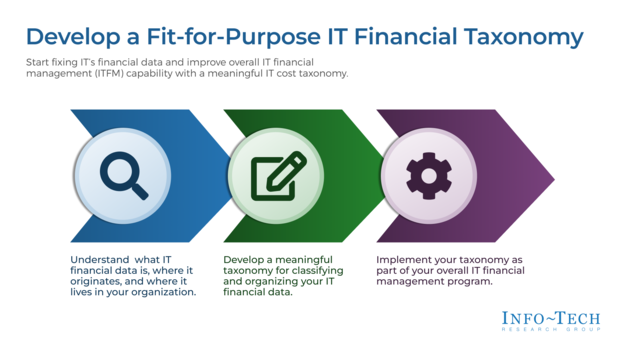
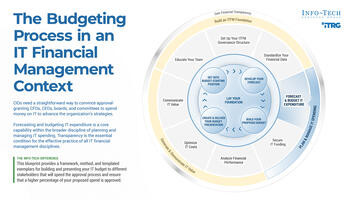 Create a Transparent and Defensible IT Budget
Create a Transparent and Defensible IT Budget
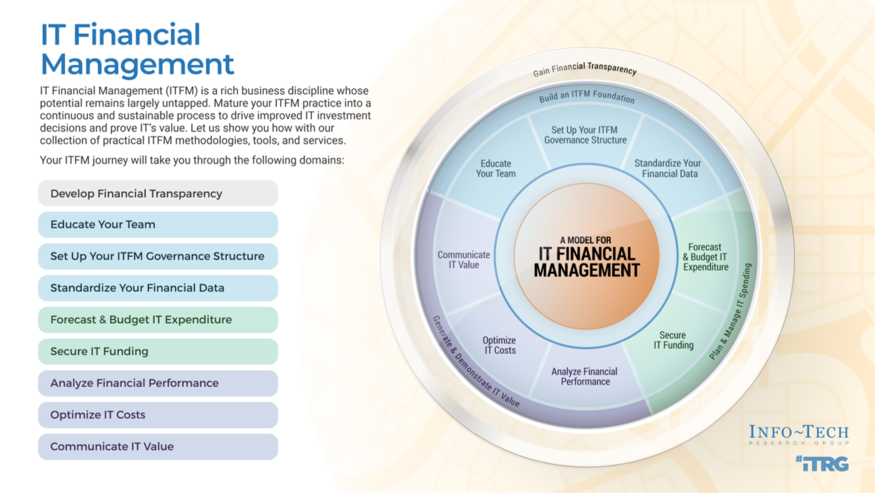 Take a Holistic Approach to IT Financial Management
Take a Holistic Approach to IT Financial Management
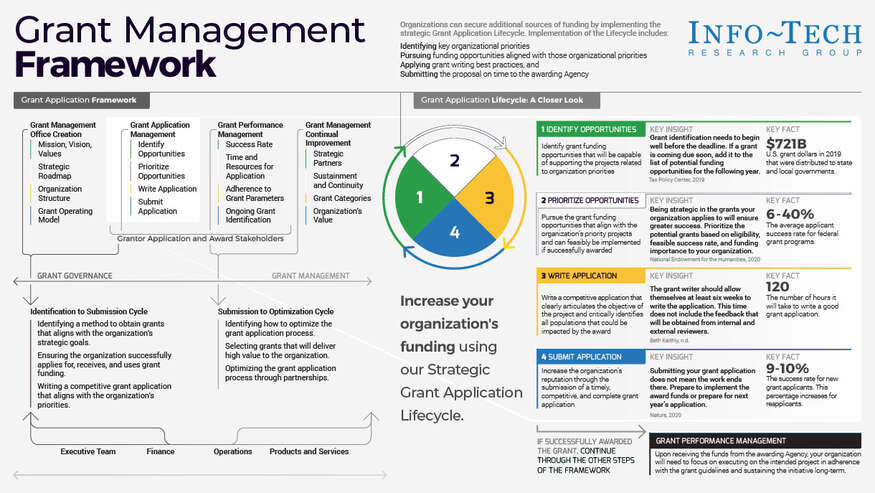 Increase Grant Application Success
Increase Grant Application Success
 Manage an IT Budget
Manage an IT Budget
 Establish a Service-Based Costing Model
Establish a Service-Based Costing Model
 Implement an IT Chargeback System
Implement an IT Chargeback System
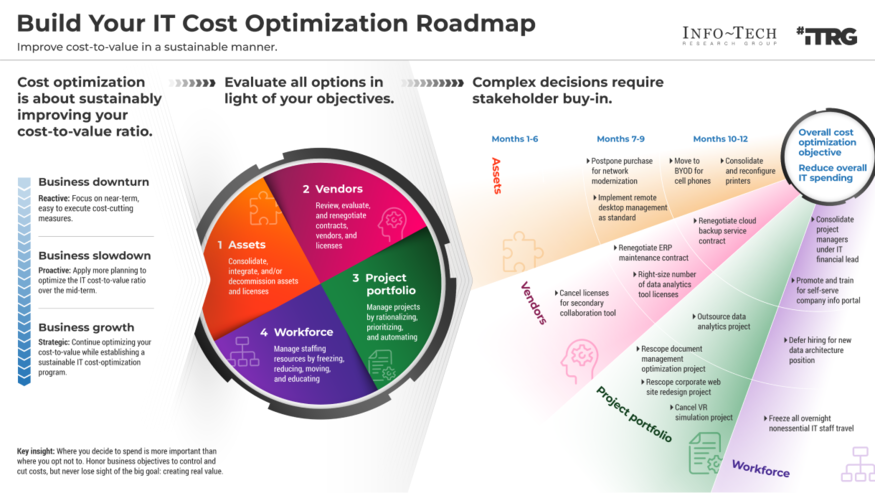 Build Your IT Cost Optimization Roadmap
Build Your IT Cost Optimization Roadmap
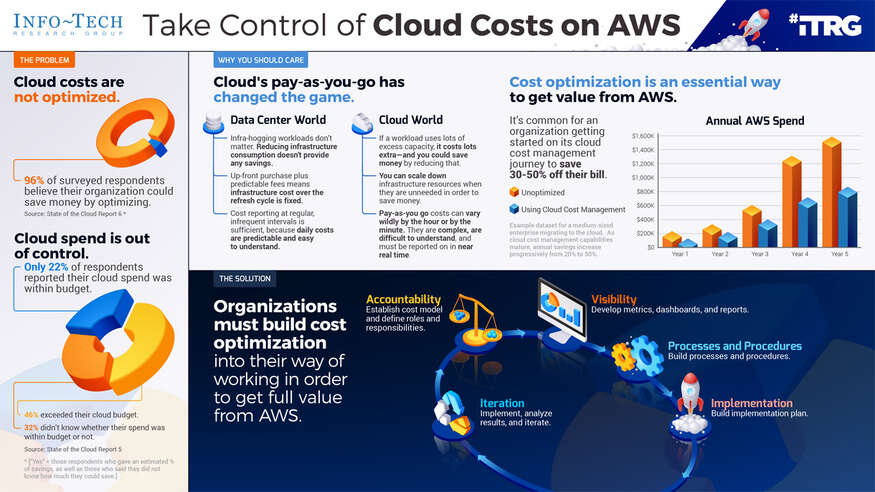 Take Control of Cloud Costs on AWS
Take Control of Cloud Costs on AWS
 Take Control of Cloud Costs on Microsoft Azure
Take Control of Cloud Costs on Microsoft Azure
 Cost-Reduction Planning for IT Vendors
Cost-Reduction Planning for IT Vendors
 Start Making Data-Driven People Decisions
Start Making Data-Driven People Decisions
 Maximize Your American Rescue Plan Funding
Maximize Your American Rescue Plan Funding
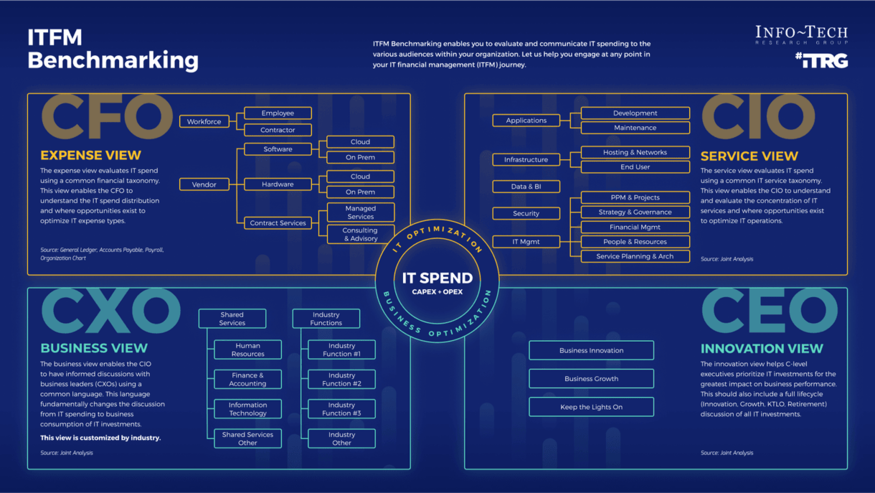 Achieve IT Spend & Staffing Transparency
Achieve IT Spend & Staffing Transparency
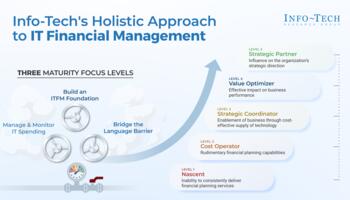 Assess Your IT Financial Management Maturity Effectively
Assess Your IT Financial Management Maturity Effectively
 Develop a Flexible IT Funding Model
Develop a Flexible IT Funding Model
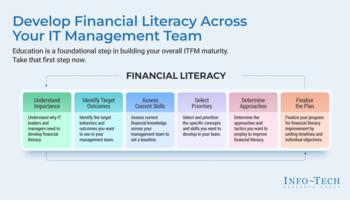 Develop Your IT Leadership Team’s Financial Literacy
Develop Your IT Leadership Team’s Financial Literacy
 Develop a Fit-for-Purpose IT Financial Taxonomy
Develop a Fit-for-Purpose IT Financial Taxonomy